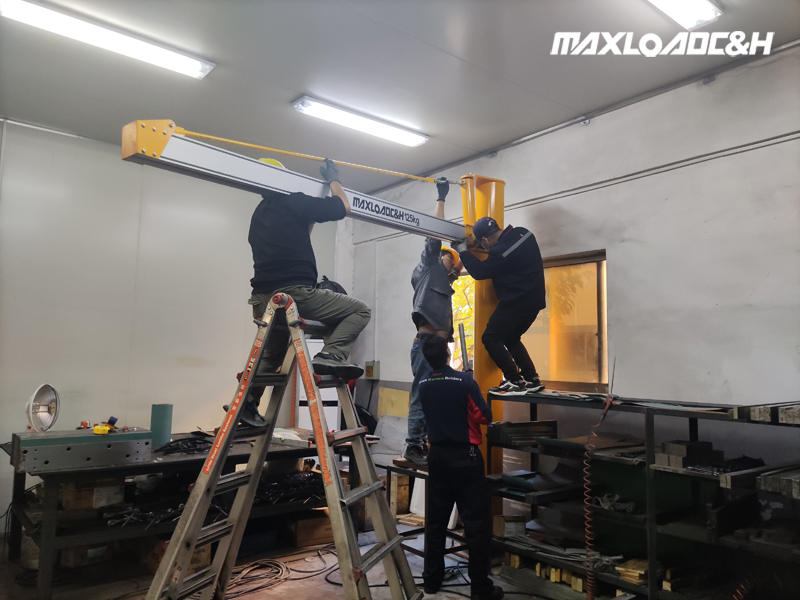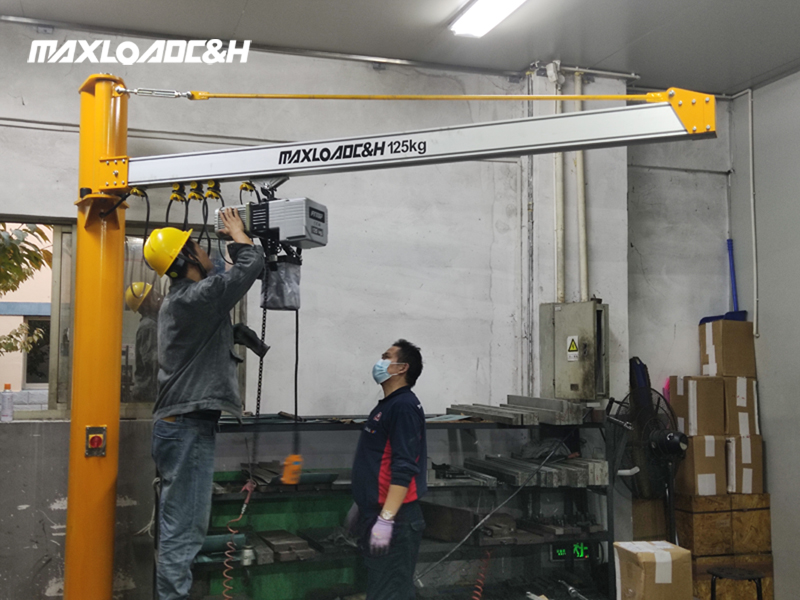1. Introduction to cantilever crane
A jib crane is a lifting machine that uses a cantilever to move in the vertical or horizontal direction. It usually consists of a base, a column, a cantilever (arm), a rotating mechanism and a lifting mechanism. Due to its structural characteristics and flexibility of use, cantilever cranes are widely used in factories, warehouses, docks and other occasions where material handling and short-distance lifting are required.
2. Key factors in choosing a cantilever crane
Lifting capacity
- Light cantilever crane: suitable for lifting lighter items, generally the lifting capacity does not exceed a few hundred kilograms.
- Medium jib crane: can be used for heavier items and can lift up to several tons.
- Heavy-duty jib crane: used for lifting large equipment or heavy objects, the lifting capacity can reach more than ten tons or even higher.

Workspace and jib crane types
- Column-type cantilever crane: suitable for places with small space and can be installed on the ground to save space.
- Wall-mounted cantilever crane: installed on the wall or column, does not occupy floor space, and is suitable for medium-space working environments.
- Mobile cantilever crane: has better mobility and adaptability, suitable for large work spaces.
Lifting height
Depending on the working environment and the size of the items, the lifting height requirements are also different. The appropriate lifting height needs to be selected according to the actual situation.
Rotation angle
- Full-rotating cantilever crane: It can achieve 360-degree rotation and has a wide range of adaptability.
- Limited rotation jib crane: The rotation angle is limited and suitable for operations in specific areas.
Rotation method
- Manual rotation: suitable for light load and frequent operations.
- Electric rotation: suitable for heavy load and fast operation needs.




 0086 17717607077
0086 17717607077
 0086 (021) 5999 9072
0086 (021) 5999 9072
 market@chnhoist.com
market@chnhoist.com







